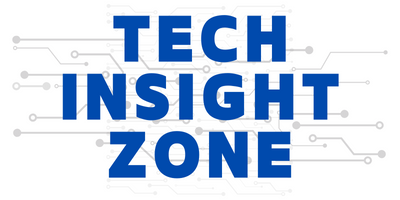Technology is advancing faster than ever, and keeping up with the latest advancements can feel challenging. However, thanks to today’s resources, staying updated is more accessible than it used to be. Digital tools and online platforms have revolutionized how we learn, making information readily available at our fingertips. The real challenge now isn’t finding the information—it’s filtering and absorbing it effectively.
Learning “How to cope with new technology” is simpler than you might think. You just need to know where to look and how to use the right tools. Following tech blogs, joining online communities, and using social media are some of the easiest ways to stay informed.
Continue reading to discover practical tips, strategies, and resources that can help you easily navigate the constantly changing field of technology. By the end of this article, you’ll have a clear roadmap for keeping your tech knowledge strong and up-to-date.
Simplifying the Journey: 3 Proven Methods to Stay Updated with Tech
1. Harnessing Smart Content: Personalized Updates via AI, Podcasts, and Video
In an era where information is abundant, personalized content curation has become one of the most effective ways to keep track of tech trends. By using AI-powered platforms, subscribing to podcasts, and consuming video content, you can stay informed while filtering out irrelevant information.
a. Tailored Content and Real-Time Updates
AI-driven tools like Google News, Flipboard, and Medium intelligently curate content based on your interests. These platforms learn from your reading habits and provide a personalized feed, helping you access the most relevant articles, videos, and updates from trusted sources. For instance, Google News allows you to create custom tech feeds while Flipboard helps you aggregate articles from multiple tech sites into one seamless experience.
On social media platforms like X (Twitter) and LinkedIn, real-time updates from thought leaders and industry experts give you instant access to breaking news and emerging trends. Twitter’s algorithm surfaces trending topics, while LinkedIn provides professional insights, making it easier for you to stay ahead in your field. Pairing AI curation with these social tools saves you time and ensures you don’t miss important developments.
Example: Twitter’s personalized feed adapts to your interactions, showing you tech trends as they gain momentum. This real-time insight means you’re never out of the loop on the latest innovations.
b. Diversifying Your Learning Through Multimedia
Text-based learning isn’t the only way to stay updated. With the rise of podcasts, webinars, and video content, you can engage with technology on the go or during downtime. Platforms like YouTube, TechCrunch, and tech-focused podcasts such as Reply All and The Vergecast provide in-depth discussions, tutorials, and expert interviews on emerging technologies.
This multimedia approach caters to different learning styles and allows you to absorb new information in a flexible format. Whether you’re commuting, exercising, or doing household tasks, you can stay informed without needing to carve out dedicated time to read.
Example: YouTube’s MKBHD offers reviews and tutorials on the latest gadgets and devices, providing detailed, accessible content that breaks down complex tech concepts in easy-to-understand formats.
2. Learning Platforms and Courses on Demand
As technology evolves, it’s essential to not only follow trends but also develop skills that keep pace. Online learning platforms provide flexible, expert-led resources that allow you to deepen your understanding of complex topics and learn at your own pace.
a. Expert-Led Learning and Affordable Courses
Platforms like Coursera, Udemy, and LinkedIn Learning offer a wide range of courses on current tech topics—from artificial intelligence to blockchain. What makes these platforms invaluable is the flexibility to learn on demand, accessing courses whenever it suits your schedule.
Additionally, the affordability of these platforms makes high-quality education more accessible than ever. For example, Coursera offers both free and paid courses, many led by professors from top universities. You can also find highly rated courses on Udemy for as low as $10 during sales, offering deep insights into specific technologies without a major financial commitment.
Example: On Udemy, courses like “Machine Learning A-Z” provide real-world applications and hands-on projects, allowing you to solidify your understanding of machine learning through practical exercises.
b. Certifications and Career Advancement
One of the major benefits of online courses is the ability to earn certifications that add value to your resume. Platforms like Coursera and Udemy offer certificates recognized by employers worldwide, while LinkedIn Learning provides personalized course recommendations tailored to your career goals. This helps you stay competitive in a fast-evolving job market.
Certifications, especially in fields like cloud computing or cybersecurity, can set you apart and open doors to new opportunities. By following these tailored learning paths, you ensure that your skills remain sharp and relevant.
Example: Completing a Google Cloud certification via Coursera not only adds credibility to your skill set but also makes you a stronger candidate for tech roles requiring cloud expertise.
3. Joining Tech Communities and Networks
Tech communities and networks are invaluable resources for enhancing your learning experience and keeping you updated with the latest technology trends.
a. Engaging in Online Discussions and Accessing Peer Knowledge
Platforms like Reddit, GitHub, and Stack Overflow foster continuous learning by providing spaces for tech enthusiasts, beginners, and experts to share knowledge and discuss developments. Engaging in these discussions helps you learn new concepts and gain insights into real-world applications.
These communities offer easy access to peer knowledge and expert advice, whether you’re facing a coding problem or need clarity on a new technology. They are often the first to discuss and share news about the latest trends and innovations, allowing you to stay ahead of the curve with early insights into emerging technologies.
Example: Developers often turn to GitHub, not just for code repositories but for staying updated on the latest development trends and tools through open-source projects and community discussions.
b. Networking Through Events and Building Lifelong Learning Communities
Attending tech conferences and events is crucial for staying at the forefront of the industry. These gatherings offer invaluable networking opportunities to connect with like-minded professionals, industry leaders, and innovators, providing expert insights, hands-on workshops, and exposure to the latest technologies.
Being part of a tech community means joining a network of lifelong learners. It’s not just about absorbing information; it involves actively contributing, asking questions, and sharing experiences. This continuous exchange of knowledge fosters a sense of belonging and encourages ongoing exploration, transforming the learning process into an engaging, collaborative journey.
Example: The Global Conference Alliance Inc. gathers some of the brightest minds in tech each year, offering deep dives into trends like AI, blockchain, and sustainable tech. Keeping an eye on the upcoming conference in Canada or other tech events can further deepen your knowledge of industry trends.
Overcoming Common Challenges in Staying Updated
While staying informed is easier than ever, it’s not without challenges. The sheer volume of information can be overwhelming, and not all content is of the same quality. Here are a few tips to help overcome these hurdles:
- Filter and Prioritize: Use tools like Feedly or Pocket to organize your content. Create feeds based on trusted sources and limit distractions by checking updates at designated times.
- Limit Your Sources: Choose a handful of reliable platforms. Overloading on content from too many places can dilute your focus. Platforms like Wired, Ars Technica, or The Verge offer consistently high-quality tech coverage.
- Engage Actively: Be an active participant in forums and discussions. Whether it’s Reddit, Stack Overflow, or a local tech meetup, contributing your insights and asking questions will deepen your understanding.
Final Words: A New Era of Staying Updated
Keeping up with the latest technology doesn’t have to be a struggle. With the right tools and strategies, learning how to stay updated with new technology has become more accessible and enjoyable than ever. From curated content feeds to real-time alerts, staying informed is just a few taps away.
Make the most of these resources to fuel your curiosity, deepen your skills, and stay ahead of the trends. The tech world moves fast, but with the right approach, so can you.
Knowledge is your most powerful asset. Leverage these tools to turn tech trends into opportunities for growth and innovation. Staying informed is not just a habit; it’s your first step toward thriving in a constantly changing world.
To further expand your understanding of how technology is reshaping various fields, explore the role of reverse image search in revolutionizing visual exploration. This innovative tool offers new ways to discover insights, track digital content, and authenticate information online.
By learning how reverse image search functions, you’ll gain a deeper appreciation for how emerging technologies are transforming the way we interact with and analyze digital information.







